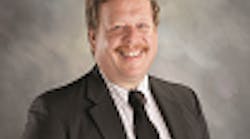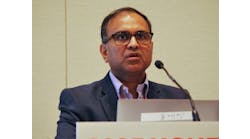All the big topics are supposed to be journeys, rather than destinations. Cybersecurity, wireless, Internet, cloud and edge computing and other forms of digitalization are also enormous in scope, so it's hard to wrap the average brain around them and their jurisdictions. So, maybe labeling them as continuous trips makes them feel less overwhelming. Fair enough. It always helps to break huge jobs into approachable chunks.
Likewise, on long road trips through regions of often mind-numbing sameness, drivers and passengers begin to scan for unusual geological features and man-made novelties to break up the monotony. Music, radio and audio books can help. But after awhile, even billboards can be as visually diverting as an oasis with cold drinks is hydrating. Knowing this, some of the best remedies are put up by locals well-aware of the mental hunger for novelty. Hence, the inexplicably welcome presence of giant Paul Bunyans and other mascots, reptile zoos, the Corn Palace, small liberals arts colleges and other tourist traps. Though not always exactly on the up-and-up and sometimes downright sketchy, these diversions can break up otherwise monotonous landscapes.
Of course, in the process control field and most other industries and businesses, the equivalent of the trackless wastes is the truly endless "talking a lot, but not saying anything" of vague exhortations, which are worse but seem more socially acceptable than saying, "I don't know anything useful." As always, talk is so cheap and plentiful, and the vast majority of it is ego-boosting puffery.
Consequently, the process control versions of refreshing roadside attractions take the form of the intriguing twists and turns in how the details of its huge digitalization topics are revealed as they evolve. For instance, it was interesting to watch the fieldbuses like Modbus, DeviceNet, Profibus, HART and Foundation Fieldbus jockey for position years ago, until they were all flatted by Ethernet, and had to come up with their own versions.
I remember many experts saying that low-cost Ethernet wasn't rugged and deterministic enough for plants floors, and now it's everywhere on all of them, and is adding Ethernet-Advanced Physical Layer (APL) to take it even further. Same goes for cheap, generic silicon boards like Raspberry Pi, Arduino and others that are usually viewed as too fragile and unreliable for process control and manufacturing, but are quickly adding power ratings and other protections, and pushing into industry just like Ethernet did before them.
Similarly, I used to wonder whether controls and software for process or discrete applications would take over both sides of the automation realm. However, I don't wonder anymore because machines and discrete production lines appear to be quicker and maybe better-suited to adopting IT-based software and methodologies.
For example, the ANSI/ISA-88 batch standard started defining functions and phases for discrete batch application, but everyone apparently loved its organization principles so much that they all adopted its methods, including process users who simply defined the endpoint of their batches as infinite. Likewise, the IEC 61131-3 programming standard for PLCs originated on the discrete side, but lately users on all sides appear to be employing it. Even the new Module Type Package (MTP) standard from NAMUR for modular process applications uses Automation Markup Language (AML), which appears to be similar to the PackML standard for packaging machines and the MTConnect standard for linking machining centers.
Ironically, once digitalized technologies succeed, reach critical mass, take over, become ubiquitous and are always-on, they become seamless and mostly invisible, just like OPC UA, Ethernet and wireless. No one tries to put together individual stories about software, networking, electricity or why the sky is blue. They're all just huge facts that everyone accepts. Similar to attractions and landmarks that are ignored by those living nearby, they fade into the background. And the search for smaller problems, diversions and useful fixes revs up again, and the journey turns out to have been be a roundtrip.






